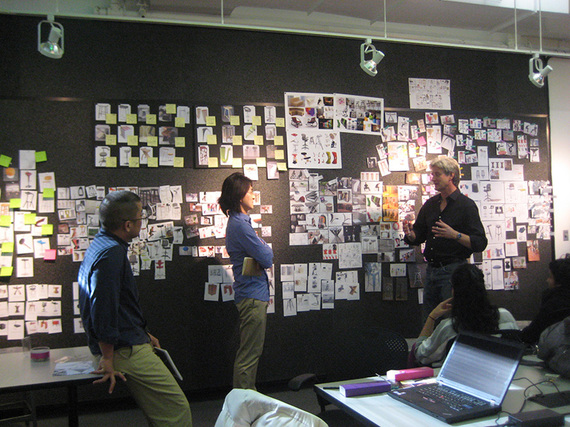We all know that for designers to succeed in business, they need to understand the language of business, however that is just the beginning. For business people and designers to collaborate productively, they also need to understand their cultural differences and be able to navigate each other's environment. Only then can they share enterprise goals on a logical and emotional basis.
Art Center College of Design in Pasadena, California and The Drucker School of Management in Claremont, California, seek to accomplish just that in their newly launched, joint Design MBA program initiated by Andy Ogden, chair of the Graduate Industrial Design Program at Art Center. Through cross-disciplinary team collaboration, designers bring their understanding of cultural values to incremental as well as breakthrough innovation - thus creating that special emotional bond to their offerings.
The program focuses primarily on entrepreneurship and aims at providing design students with the knowledge, skills, experience, discipline, and the emotional tenacity to see projects through from business formulation to final offering. Immersing design students for a year in a business school environment allows them to soak in the tacit knowledge of how to work with business and provide strategic value.
As our world and technology becomes increasingly complex, integrating design in strategy development has become crucial. Design is now faced with having to make tradeoffs that were not necessary in the past. Think of the difference between designing a saltshaker versus designing your smart phone. These compromises lead to the creation of new categories, carefully tailored to the needs of a specific market segment and doing this with an eye to cultural values is what will make or break any business endeavor.
Tata's US$2,000 Nano car, introduced in 2008, is an excellent example of a vehicle that failed, having sold only 70,000 vehicles annually (as compared with 300,000 BMW Mini's sold annually). A user need seemed obvious at the time, since Indian families of five often ride though the streets on a moped at breakneck speeds without any protection at all, so, how could they not want a low cost solution?
Despite all the advantages offered, relative comfort, space, and protection - users stayed away. What their business and design team failed to realize was that users saw automobiles as aspirational products and the Nano relayed signals that one only pretended to have arrived, when one had not yet arrived.
Apple's smart phone, the iPhone, on the other hand, is an excellent example of teams applying their cultural understanding to a product service system.
With multiple PDA - phone combinations available at the time of it's launch in 2007, no one really seemed to need a smart phone, however, 250 million units later, we see things a bit differently.
What was it that actually converted users from a Blackberry to an iPhone? We all take pinch and zoom, finger-scrolls and digital keypads for granted now, however, in the beginning, this was the magical element. Design, when well executed is indistinguishable from magic and for this magic to occur, new offerings have to be ten times better than what is already in user's hands. As the above examples illustrate, the understanding of cultural values can be immensely valuable to one's bottom line.
